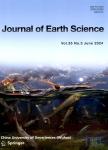GeoChip-based microbial functions in biogeochemical cycles and their responses to environmental factors in Tengchong hot springs
作者机构:School of Environmental Studies China University of Geosciences School of Ocean Sciences China University of GeosciencesBeijing State Key Laboratory of Biogeology and Environmental Geology China University of Geosciences
出 版 物:《Journal of Earth Science》 (地球科学学刊)
年 卷 期:2024年
核心收录:
学科分类:070902[理学-地球化学] 070801[理学-固体地球物理学] 0709[理学-地质学] 07[理学] 0708[理学-地球物理学]
基 金:supported by grants from the National Natural Science Foundation of China (Grant No. 42172339 91951205)
摘 要:Microorganisms actively participate in biogeochemical cycling processes and play a crucial role in maintaining the dynamic balance of hot spring ecosystems. However, the distribution of microbial functional genes and their influencing factors in hot springs remain largely unclear. Therefore, this study investigated the microbial functional genes and their potential for controlling biogeochemical cycles (C, N, S, and P) in the hot Springs of Tengchong, China, using the Geochip method, a functional gene microarray technology. The examined hot springs have very different microbial functional genes. A total of 22736 gene probe signals were identified, belonging to 567 functional genes and associated with 15 ecological functions, mainly involving stress response, carbon cycle, nitrogen cycle, sulfur cycle, phosphorus cycle and energy processes. The amyA, narG, dsrA and ppx genes were most abundant in carbon, nitrogen, sulfur and phosphorus cycles, respectively, and were significantly correlated with pH, temperature and SO42-. The diversity and abundance of detected gene probes were negatively correlated with temperature. The α-diversity (i.e., Shannon index) was high at low temperature and low pH. Molecular functional interactions revealed by the gene connectivity levels were negatively correlated with temperature, pH and SO42-. These results suggested that the abundance, diversity and interactions of microbial functional genes were significantly influenced by geochemical parameters?. In addition, some genera possessed functional genes related to carbon, nitrogen, sulfur, and phosphorus cycles and can synergistically control the biogeochemical cycles of carbon, nitrogen, sulfur and phosphorus. These findings provide new insights into the functional potentials of microorganisms to participate in biogeochemical cycles and their responses to environmental factors in hot springs.



